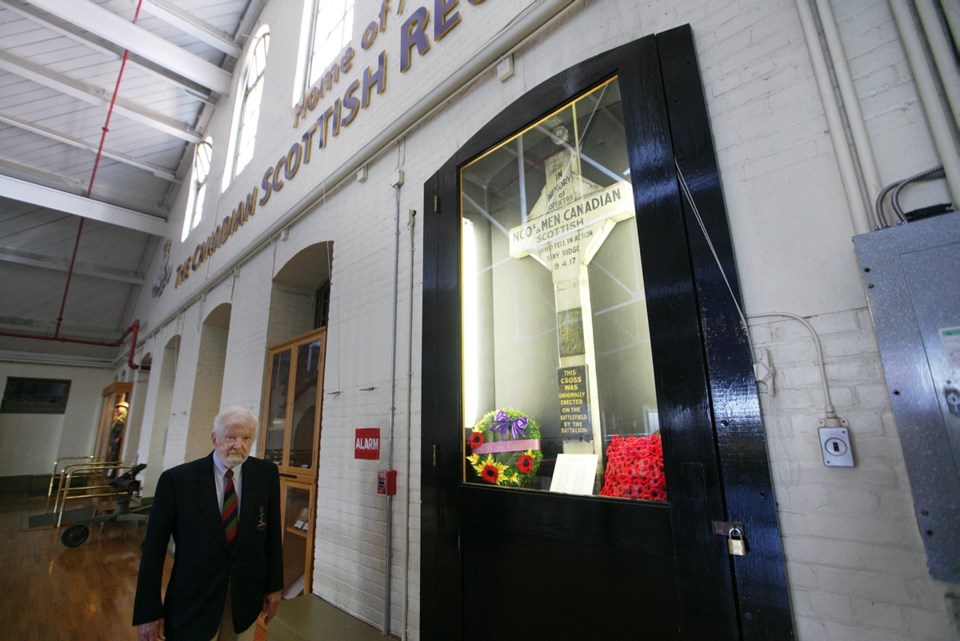The Canadian Scottish Regimental Museum in Victoria is beginning preparations for next year, when Canada will commemorate the centennial of the Battle of Vimy Ridge.
The Regimental museum, located in the Bay Street Armoury, contains a number of artifacts from the First World War, including some prized Vimy pieces.
Those pieces include the wooden cross, assembled, painted and first erected at Vimy after the battle by soldiers of the Canadian Scottish Regiment, which took part in the battle.
The Battle of Vimy Ridge, April 9-12, 1917, was the first action to feature all four Canadian divisions fighting together as the Canadian Corps. Key objectives were achieved by the first day and it earned new respect and recognition for Canada.
“From a Canadian perspective, the British had tried to take Vimy, and failed, likewise the French,” said Michael Heppell, a former commanding officer of the Canadian Scottish and a volunteer at the museum.
“So there was not a lot of confidence expressed that the Canadians could actually do it,” said Heppell. “This is why so many people relate the name ‘Vimy’ to the pride of Canada.”
Jeremy Diamond, executive director of the Vimy Foundation in Toronto, says many Canadians aren’t aware of the full story of Vimy Ridge. But the word has become almost shorthand for national courage, strength and sacrifice.
“Vimy is one of those words we learn in school,” he said. “It’s one of those moments that have been linked to our national identity.”
Diamond said the battle was part of a historical process where Canada and Canadians evolved a new independence and international recognition.
“And it was front page in newspapers in Canada and even America: ‘Canadians Take Vimy Ridge,’ ” he said.
So Canada entered the First World War as a recent, former colony of Great Britain. By the end of the war, Canada was signing the final peace treaty as a full nation.
Diamond said next year’s centennial events are expected to be held across Canada and even in France, where the battle was fought.
He said small museums, such as the Canadian Scottish Regimental Museum, can have key roles in marking the 100th Anniversary of the battle.
“We want Canadians to understand that Vimy was an event that their own community probably had a piece of,” he said.
The Canadian Scottish Regimental Museum contains displays of medals, including four replicas of Victoria Crosses awarded to regimental members during the First World War. (Victoria Cross medals are so rarely awarded the real things are too valuable to go on public display.)]
One of those Victoria Cross medals was awarded to Private William Milne for taking out two machine guns during the Battle of Vimy Ridge.
For arms enthusiasts, the museum has one of the most extensive collections of Lee Enfield rifles in North America.
It even has a Ross rifle, a weapon designed and built specially in Canada, but considered a failure. It couldn’t withstand the field conditions of trench warfare.
The museum also contains artifacts from the Second World War, Korean War and even Afghanistan.
Volunteers at the museum have yet to finalize plans for the Vimy centennial. But it’s hoped historical experts can be arranged to be on site to act as Vimy interpreters for open house events and high school visits.
In the meantime, the museum is open to the public by donation. Until Aug. 31, it’s open Tuesday to Friday, 10 a.m. to 3 p.m.
From Sept. 1 to May 31, the museum is open Tuesdays, 9 a.m. to 2 p.m.



